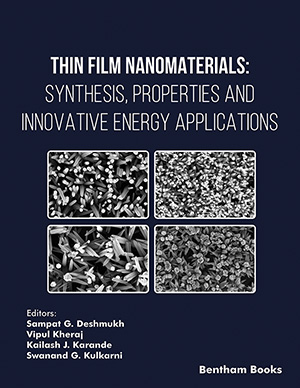
Abstract
In the last decade, the onset of neurodegenerative diseases (ND) has been strongly widespread due to the rapid increase in the world population. There are many neurodegenerative diseases such as Alzheimer’s disease, Parkinson’s disease, spinal muscular atrophy, Levy body disease, etc. Alzheimer’s disease and Parkinson’s disease are most commonly found. Neurodegenerative diseases occur due to the degradation of neurons in the brain and the spinal cord. The diagnosis of both diseases has increased, however, the successful treatment is still very limited because of the lower ability of the drug to cross the blood-brain barrier (BBB). It is a big challenge to deliver the drug to the brain, because only small and lipid-soluble agents cross the BBB, by considering this assumption, the liposomal drug delivery system is considered one of the effective treatments in neurodegenerative diseases. Liposomes are considered to be an ideal carrier as they are flexible, biocompatible, and can carry different types of therapeutic molecules across the BBB. This review focus on the potential use of lipid delivery system in the treatment of neurodegenerative diseases and the application of liposomes in Alzheimer's disease and Parkinson’s disease.
Keywords: Liposomes, lipid delivery system, alzheimer's disease, parkinson’s disease, blood-brain barrier.
[http://dx.doi.org/10.1172/JCI24761] [PMID: 15931380]
[http://dx.doi.org/10.1016/j.biocel.2006.07.001] [PMID: 16978905]
[http://dx.doi.org/10.1155/2011/467180]
[http://dx.doi.org/10.1038/nrd2896] [PMID: 20431570]
[http://dx.doi.org/10.1080/15398285.2016.1202017]
[http://dx.doi.org/10.1016/j.ejpb.2020.01.005] [PMID: 31982574]
[http://dx.doi.org/10.1007/s13534-021-00198-5] [PMID: 34350048]
[http://dx.doi.org/10.2174/156802609787521571] [PMID: 19200004]
[http://dx.doi.org/10.1016/j.chemphyslip.2019.01.005] [PMID: 30660746]
[http://dx.doi.org/10.2217/nnm-2017-0365] [PMID: 29790418]
[http://dx.doi.org/10.1242/dmm.030205] [PMID: 28468935]
[http://dx.doi.org/10.1016/B978-0-12-416603-5.00004-3]
[http://dx.doi.org/10.1038/nrneurol.2017.188] [PMID: 29377008]
[http://dx.doi.org/10.1111/j.1528-1167.2012.03696.x] [PMID: 23134489]
[http://dx.doi.org/10.1155/2019/2105607]
[http://dx.doi.org/10.1016/j.cortex.2017.09.018] [PMID: 29102243]
[http://dx.doi.org/10.1038/nrneurol.2012.236] [PMID: 23183882]
[http://dx.doi.org/10.3233/JAD-2010-1221] [PMID: 20061647]
[http://dx.doi.org/10.1038/nrm2101] [PMID: 17245412]
[http://dx.doi.org/10.1016/j.neulet.2018.12.034] [PMID: 30586637]
[http://dx.doi.org/10.1093/hmg/ddz038] [PMID: 30753527]
[http://dx.doi.org/10.1056/NEJM199810083391506] [PMID: 9761807]
[http://dx.doi.org/10.3390/antiox6030051] [PMID: 28698499]
[http://dx.doi.org/10.1016/j.abb.2018.04.018] [PMID: 29702063]
[http://dx.doi.org/10.12688/f1000research.10100.1] [PMID: 28357055]
[http://dx.doi.org/10.1016/j.jconrel.2016.05.044] [PMID: 27208862]
[http://dx.doi.org/10.1016/S1474-4422(07)70326-5] [PMID: 18093565]
[http://dx.doi.org/10.1016/j.jconrel.2007.12.018] [PMID: 18313785]
[http://dx.doi.org/10.1146/annurev.bb.09.060180.002343] [PMID: 6994593]
[http://dx.doi.org/10.15171/bi.2016.30] [PMID: 28265539]
[http://dx.doi.org/10.1016/j.pneurobio.2008.12.002] [PMID: 19395337]
[http://dx.doi.org/10.1186/2045-8118-10-12] [PMID: 23432852]
[http://dx.doi.org/10.1093/bjaceaccp/mkr018]
[http://dx.doi.org/10.1016/j.semcdb.2015.01.002]
[http://dx.doi.org/10.4137/PMC.S13384]
[http://dx.doi.org/10.4155/tde.10.44] [PMID: 22833961]
[http://dx.doi.org/10.1007/s11064-009-0081-y] [PMID: 19856206]
[http://dx.doi.org/10.1016/j.addr.2011.11.010] [PMID: 22154620]
[http://dx.doi.org/10.1016/j.pharmthera.2004.08.001] [PMID: 15500907]
[http://dx.doi.org/10.2174/1381612822666160726112115] [PMID: 27464721]
[http://dx.doi.org/10.1016/j.jconrel.2009.10.024] [PMID: 19874861]
[http://dx.doi.org/10.2174/157341306775473791]
[http://dx.doi.org/10.18388/abp.2000_3985] [PMID: 11310966]
[http://dx.doi.org/10.4103/1673-5374.327328] [PMID: 34782553]
[http://dx.doi.org/10.2147/IJN.S183117] [PMID: 30587974]
[http://dx.doi.org/10.2147/IJN.S239608] [PMID: 32425521]
[http://dx.doi.org/10.1016/j.biomaterials.2014.03.082] [PMID: 24746790]
[http://dx.doi.org/10.1080/10717544.2019.1636420] [PMID: 31290705]
[http://dx.doi.org/10.1016/j.ijpharm.2013.05.009] [PMID: 23680731]
[http://dx.doi.org/10.1080/08982104.2017.1349143] [PMID: 28670949]
[http://dx.doi.org/10.3109/03639045.2010.541262] [PMID: 21231901]
[http://dx.doi.org/10.1111/j.1365-2796.2010.02315.x] [PMID: 21158978]
[http://dx.doi.org/10.4161/hv.27882] [PMID: 24525778]
[http://dx.doi.org/10.1159/000485117] [PMID: 29161719]
[http://dx.doi.org/10.2147/IJN.S210320] [PMID: 32431504]
[http://dx.doi.org/10.3389/fneur.2019.00218] [PMID: 30941085]
[http://dx.doi.org/10.1016/j.tins.2007.03.006] [PMID: 17408759]
[http://dx.doi.org/10.1126/science.1087753] [PMID: 14593166]
[http://dx.doi.org/10.1038/35081564] [PMID: 11433374]
[http://dx.doi.org/10.3390/ijms10062510] [PMID: 19582217]
[http://dx.doi.org/10.1111/j.1749-6632.2009.05108.x] [PMID: 20146696]
[http://dx.doi.org/10.1517/17425247.2011.556616] [PMID: 21314492]
[http://dx.doi.org/10.1016/j.jconrel.2018.03.019] [PMID: 29588159]
[http://dx.doi.org/10.1038/s41380-020-0742-4] [PMID: 32372010]
[http://dx.doi.org/10.2217/nnm-2016-0267] [PMID: 28093036]
[http://dx.doi.org/10.1021/acssuschemeng.8b04507]
[PMID: 19103565]
[http://dx.doi.org/10.1080/10717544.2017.1309476] [PMID: 28415883]
[PMID: 26834457]
[http://dx.doi.org/10.1186/s40659-016-0093-4] [PMID: 27378167]
[http://dx.doi.org/10.1007/s11060-014-1584-1] [PMID: 25195130]
[http://dx.doi.org/10.3389/fbioe.2020.566767] [PMID: 33195128]
[http://dx.doi.org/10.3389/fimmu.2018.00155] [PMID: 29459867]





























